Day 3 of a 3 day Late Winter/Early Spring tour and we spent our last day in the Brecks. After a frost overnight, we drove down through thick fog which thankfully lifted and broke just as we arrived. It was then dry and bright, with much lighter winds, though clouding over a little through the afternoon.
Our first destination for the morning was Santon Downham. As we walked in along one of the rides, we could see a couple of Woodlarks flying round further along, but there were several people watching them, so we decided not to pursue them further and come back to them later when it had warmed up a bit more. As we came out of the underpass, a male Stonechat was in the back of the hawthorn ahead of us, alarm calling. It flew over the railway but then came back a few seconds later and perched on the very top of another bush right ahead of us.
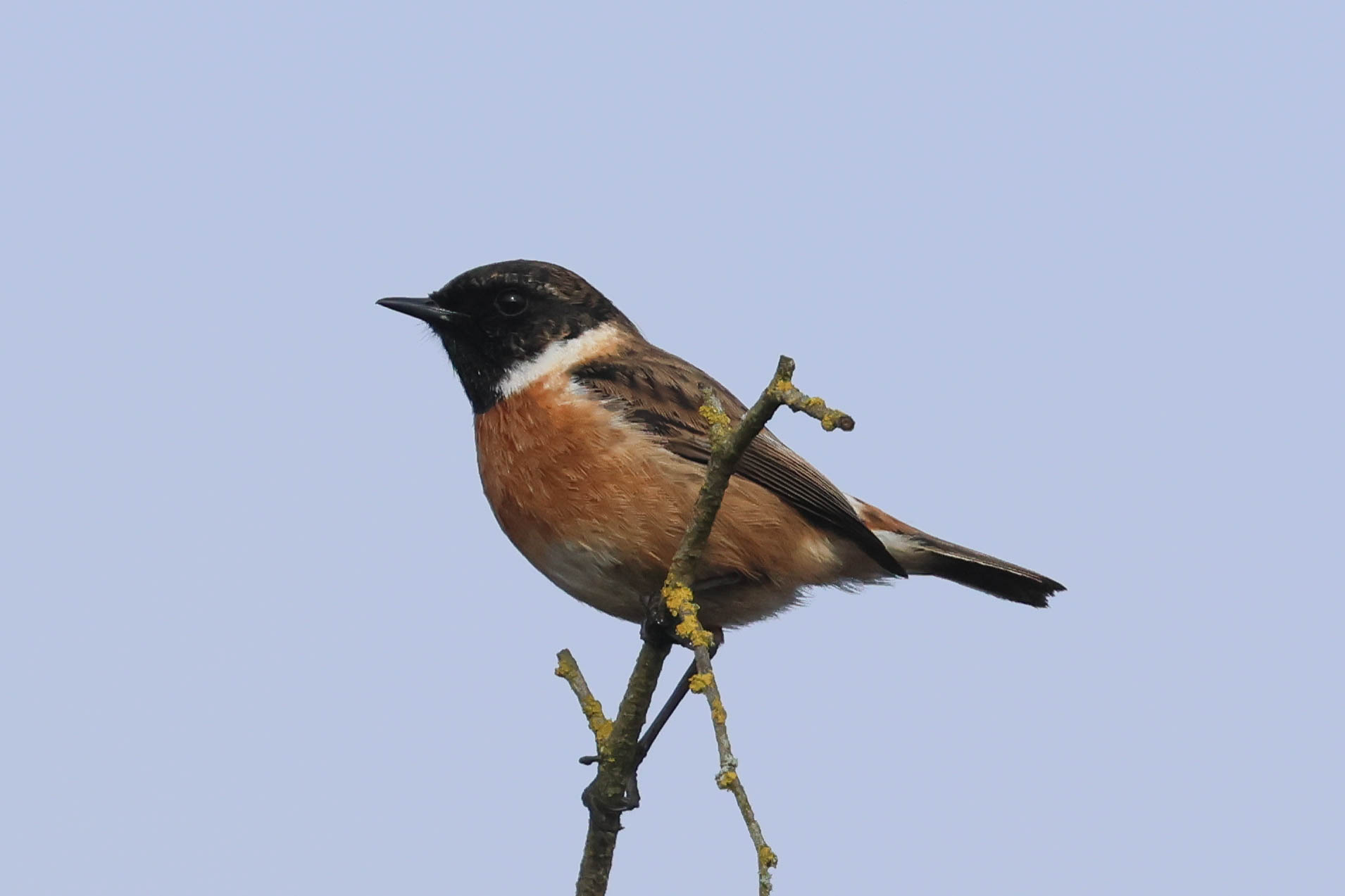
A couple of Long-tailed Tits flitted ahead of us beside the path and three Dunnocks wing-flicked to each other. We could hear a Yellowhammer calling and it flew up and landed in a tree the other side of the path, a smart canary-yellow faced male. A couple of Reed Buntings were singing from the reeds. As we cut down towards the river, a Treecreeper was singing and we had some brief views of it in the old coppice trunks.
The riverside path was rather slippery today, so we picked our way down carefully. A couple of Mute Swans and a pair of Little Grebes were on the water, one of the latter swimming hard to keep pace with the flow. A few Siskins called as they flew back and forth overhead, but were hard to see looking into the sun over on the Suffolk side – we would have a better opportunity to see them later. A Dunnock perched up singing.
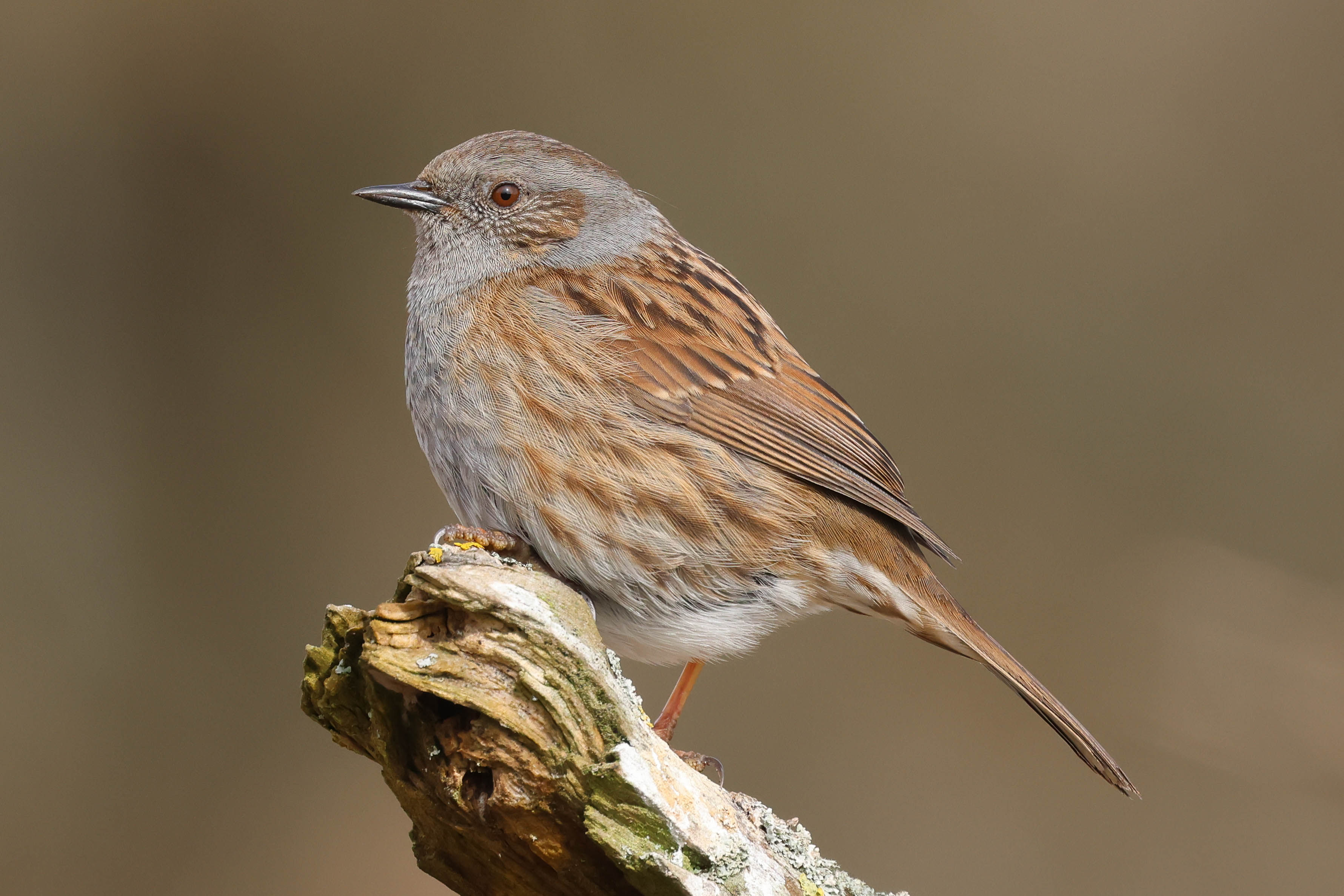
There were a lot of people along the river today, possibly because it was the first sunny day for a while and everyone was hoping to see one of the Lesser Spotted Woodpeckers. One had been heard a couple of times much earlier, but nothing since. We stopped and listened for a bit too. There were one or two Great Spotted Woodpeckers drumming but surprisingly little activity from them today, given the sunshine and nothing from their smaller relatives.
A Nuthatch was calling from across the river and after a while flew over into one of the poplars in front of us, where we watched it in the branches, joined by a second. A pair of Marsh Tits were feeding on the buds as several Great Tits were singing. Two Stock Doves flew up into the poplars where we could get them in the scope. A drake Mandarin flew past over the river. A couple of Common Buzzards circled up in the sunshine.
We had lots to do today, so we didn’t have too long to spend here this morning. After an hour or so, we decided to head back. A Woodlark was singing as we walked round towards the railway but when we got to the other side it had gone quiet. Continuing on down the ride, towards where they had been earlier, one flew up and landed on the grass over by the railway. We walked a little further and realised it was now much closer to the track, calling quietly. We had a great view of it there and then it flew up and landed on a tree beside the railway briefly, before dropping back round behind us.
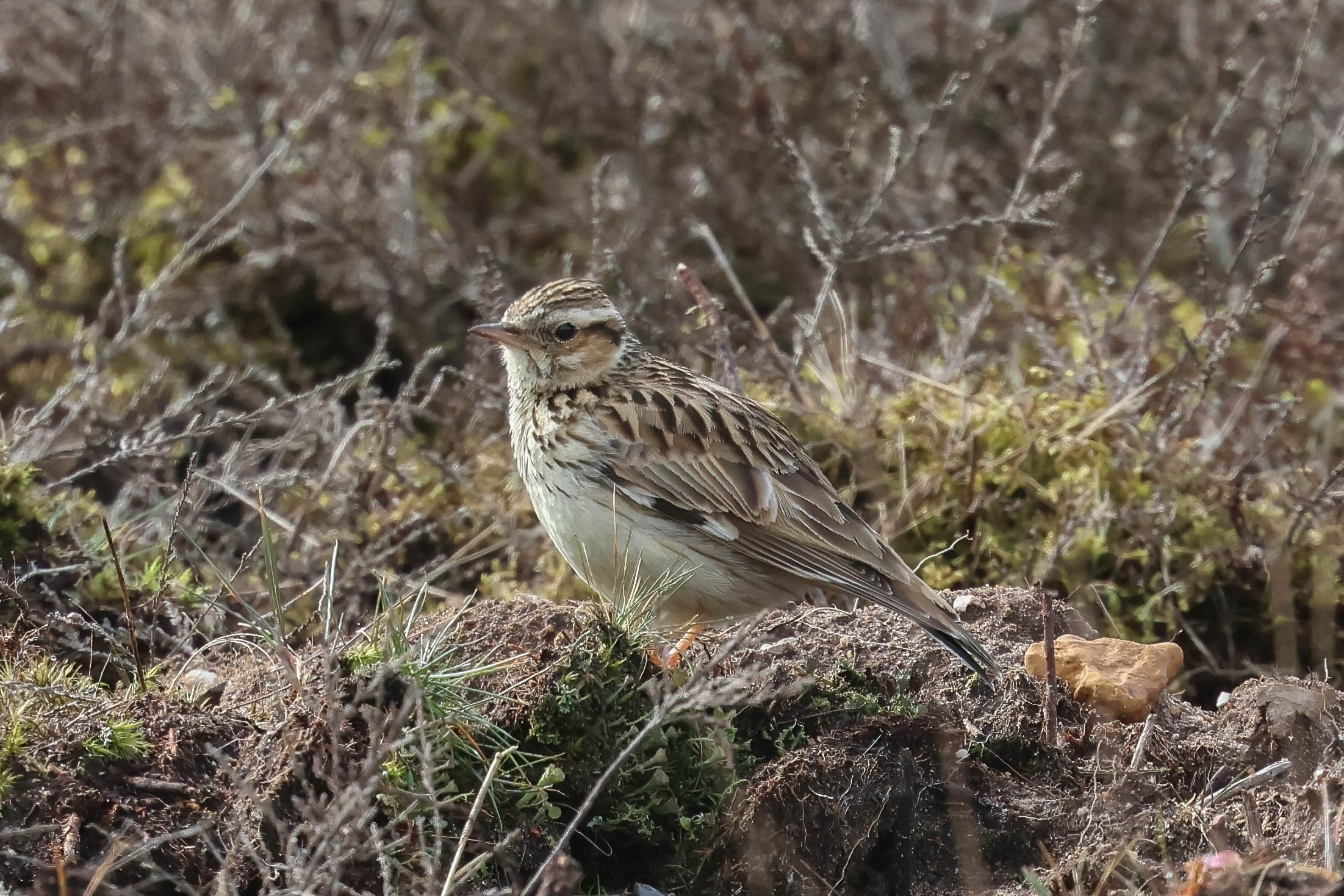
There was still another Woodlark calling a little further up and it flew up now and landed in one of the trees where it started singing softly. We had a lovely view of it through the scope now, a nice male with rusty cheeks. When it took off again and flew round, another male circled with it, the first disappearing down in the long grass while the second flew further back along the ride where it was joined by a third.
It was a nice bright morning, so we walked back to the minibus and headed off into the forest to look for Goshawks. When we pulled up overlooking the forest, there were already several Common Buzzards circling up in the sky. An adult female Sparrowhawk skimmed low over the trees briefly, then came up again chasing a browner juvenile female, the two of them up and down over the trees in front of us.
There were Skylarks singing above us here too, very different from the song of the Woodlark we had listened to earlier, much more cheerful. A couple of Red-legged Partridge were in the fields along with several Brown Hares, two of which even indulged in some brief boxing. A Lapwing started to display over the field behind us at one point too.
We didn’t have too long to wait before a Goshawk appeared, a juvenile female, which then started displaying, flying across over the trees with deep, exaggerated wingbeats. It dipped down behind the tree tops but then circled up again, so we could get it in the scope. We watched it in the air for some time, eventually drifting off a little more distantly to the east and circling with two Common Buzzards giving us a good chance to properly appreciate its size.
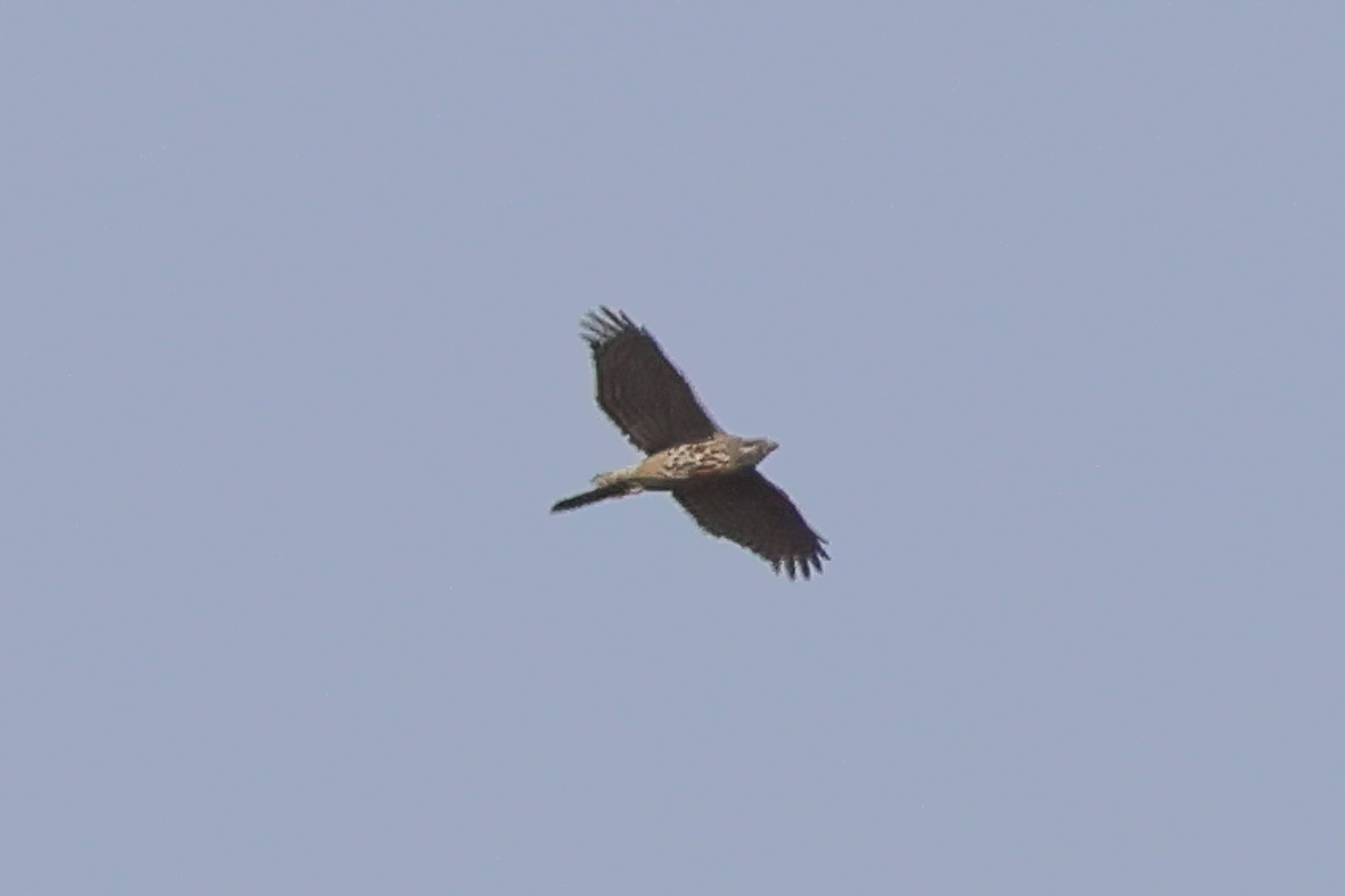
Eventually an adult male Goshawk appeared too, but never really came up very high above the trees. As the female disappeared, we were just thinking about heading off for lunch, when we suddenly noticed all the pigeons erupt from the pines and looked back over to see the male chasing them out. It swept through the tops a couple of times but quickly seemed to lose interest and disappeared back down.

It definitely was time for lunch now, so we drove over to Lynford Arboretum. As we pulled into the car park a couple of familiar faces were just eating their lunches sat on the back of their car. We stopped to say hello but they waved us out of the way – a Firecrest had just appeared in the trees across from them. We got out quickly and had great views of two Firecrests low in the holly and then up in one of the firs. Then someone called to say there was another Firecrest in the hollies behind us too. We watched that flicking around low in the bushes before it was chased round by another ‘crest and disappeared off further back.

A very welcome distraction, we now all settled back down to the important matter of lunch, in the sunshine on the picnic tables. Afterwards, we walked across to the Arboretum. There were several Siskins in the trees around the coffee shop and a selection of tits coming down to the feeders, including one or two Coal Tits. Down at the gate, disappointingly there was no seed out on the public side of the camouflage netting today and all the activity was on the other side, out of view. We did see one or two Yellowhammers in the trees.
The feeders were empty down at the bridge too, but someone had put some seed on the pillars, which the Mallards had not yet managed to completely devour. We stopped to watch and had great views of Marsh Tits and a Nuthatch which both came in to feed.
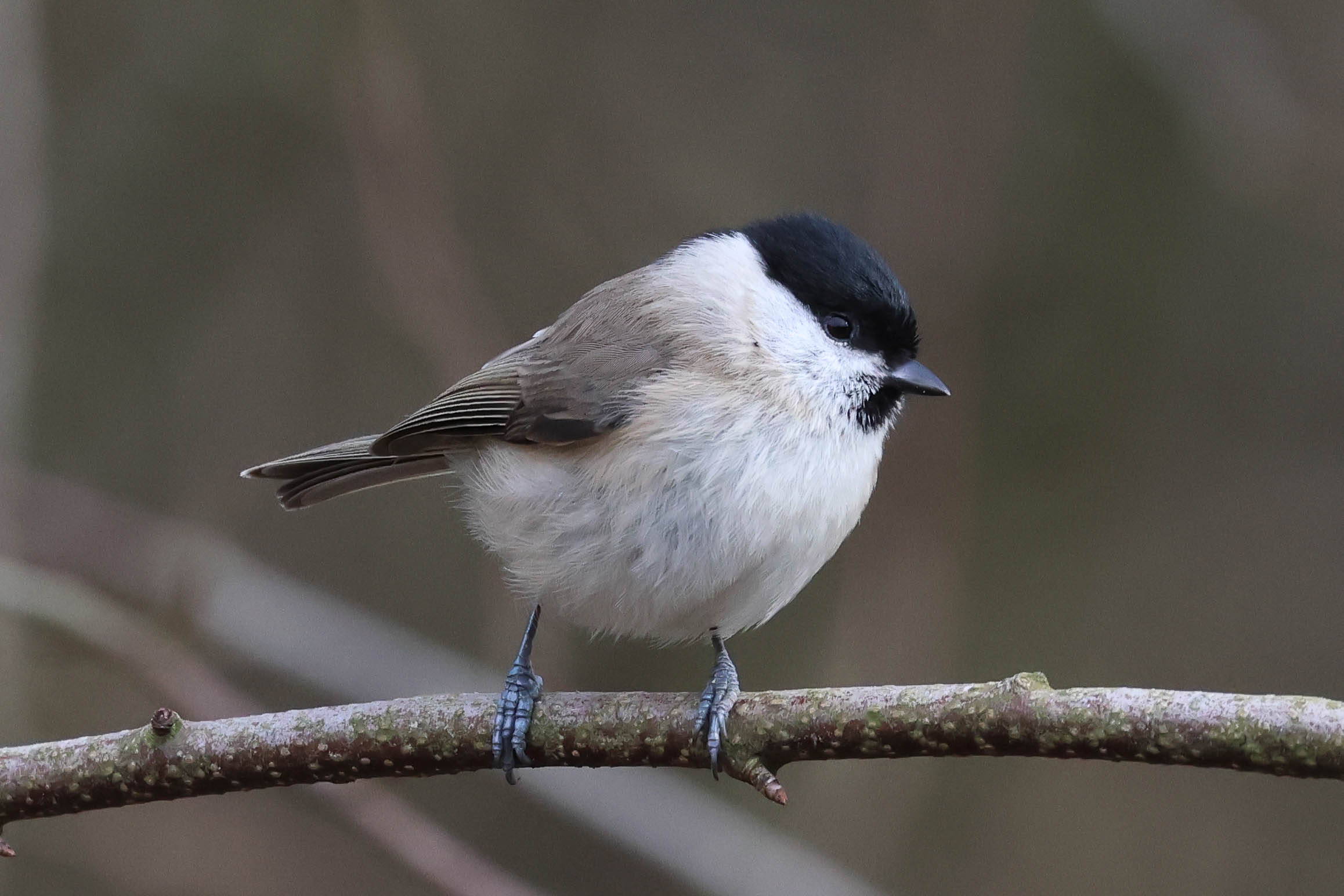
Continuing on along the path beside the paddocks, we scanned the trees but it was pretty quiet here today. Eventually one Redwing landed in the top of one of the ash trees and later a larger flock flew in to join it, but there were no finches in here at all today. Another Firecrest was flitting around in the ivy in the trees by the path.
We stopped to scan the tops of the firs at the back of the paddocks, but there was no sign of any Hawfinches – they were late coming in today. A male Sparrowhawk flew in and landed in one of the tree tops, which we got in the scope. We were still admiring it, when three Hawfinches flew in. Whether they were put off by the presence of the Sparrowhawk or not, they circled round a couple of times and didn’t land immediately, before disappearing from view. We had a hunch where they might have landed, so changing our angle we managed to find them perched in the top of a fir tree. It was actually a much better view from here too!

After a while, the Hawfinches flew off south and we lost sight of them as they disappeared behind the trees. We decided to move on and walked on round the paddocks. There were a couple of Canada Geese on the grass on the far side of the lake and a pair of Little Grebes laughed at us from along the far bank. There were lots of Siskins feeding in the alders and we stopped to watch them coming down to drink on the edge of one of the islands.
The first Stone Curlews always start to return in the middle of March and we knew there were some seen yesterday further down in Suffolk, where we wouldn’t have time to go today, and at Weeting, where the reserve was unfortunately not open yet. However, over lunch we had received a message to say there were four in a field nearby, so to finish the day we thought we would head round there and see if they were still present.
When we pulled up at the corner of the field, it looked pretty empty at first, all we could see were just a few Red-legged Partridges. But Stone Curlews are masters of camouflage, so we got the scope out and started to scan. On our second pass, we noticed a shape hidden in the wheat shoots and zooming up we could just make out the head of a Stone Curlew face on to us, hunkered down and some way over in the field. It was tricky to see, but everyone had a quick look before we drove a further down to a gateway to see if we could get a better angle.
The Stone Curlews were much closer and we could see all four of them now. They were still far enough away that we wouldn’t disturb them so we got out of the minibus quietly and set the scope up. Much better views now, we could see their staring yellow eyes and short yellow-and-black bills. They continued to doze.

It was an excellent way to wrap up the day, and the three day tour, with our first Stone Curlews of the year. Despite some tricky weather conditions at times, it had been a great three days with an excellent variety of birds. We said our goodbyes and headed for home.
















